Business Travel News
Stay ahead with Business Travel News from Skift. Get the latest corporate travel updates, essential for navigating this vital sector. Our coverage offers insights into travel policies, risk management, and procurement strategies for informed decision-making.
Find articles on travel buyer tactics, negotiation strategies, and supplier relations to optimize travel programs. Stay updated on booking channels, global distribution systems (GDS), and direct connections.
Safety is key; our duty of care content focuses on traveler safety, risk management, and compliance with evolving regulations. Discover how companies use loyalty programs to enhance traveler satisfaction and build long-term supplier relationships.
Explore the business travel industry with Skift’s experts. Read comprehensive reports, insider news, and expert analyses to understand the future of corporate travel.
Check the latest articles from Skift and stay informed with the most relevant business traveler news.

Generation Next: The Women Shaping Travel’s Future
These women leaders are the travel industry’s disruptors and innovators, and you can bet they’re on more than one shortlist for the next big thing.
Sarah Kopit | 10 mins ago

Daily Lodging Report
Business Travel Grows in APAC
Strong passenger demand, in-person events, and positive industry momentum are driving business travel growth, with global passenger demand up 9.1%, hotel occupancy nearing 70%, and steady travel demand expected through the next quarter.
7 hours ago
Business Travel
Skift Power Rankings: Greg O’Hara
As the founder of private equity firm Certares, O’Hara has been one of the most active players in travel industry deal-making.
Justin Dawes | 1 week ago

Star Alliance Fires Back at SAS Defection with Loyalty Status Match
With the ink barely dry on the divorce papers, Star Alliance is wasting no time in luring back some of SAS’ most loyal - and profitable - passengers. The aim of this neatly timed promotion is business continuity and customer retention, but it remains to be seen how many frequent flyers will take up the offer.
Gordon Smith | 1 week ago
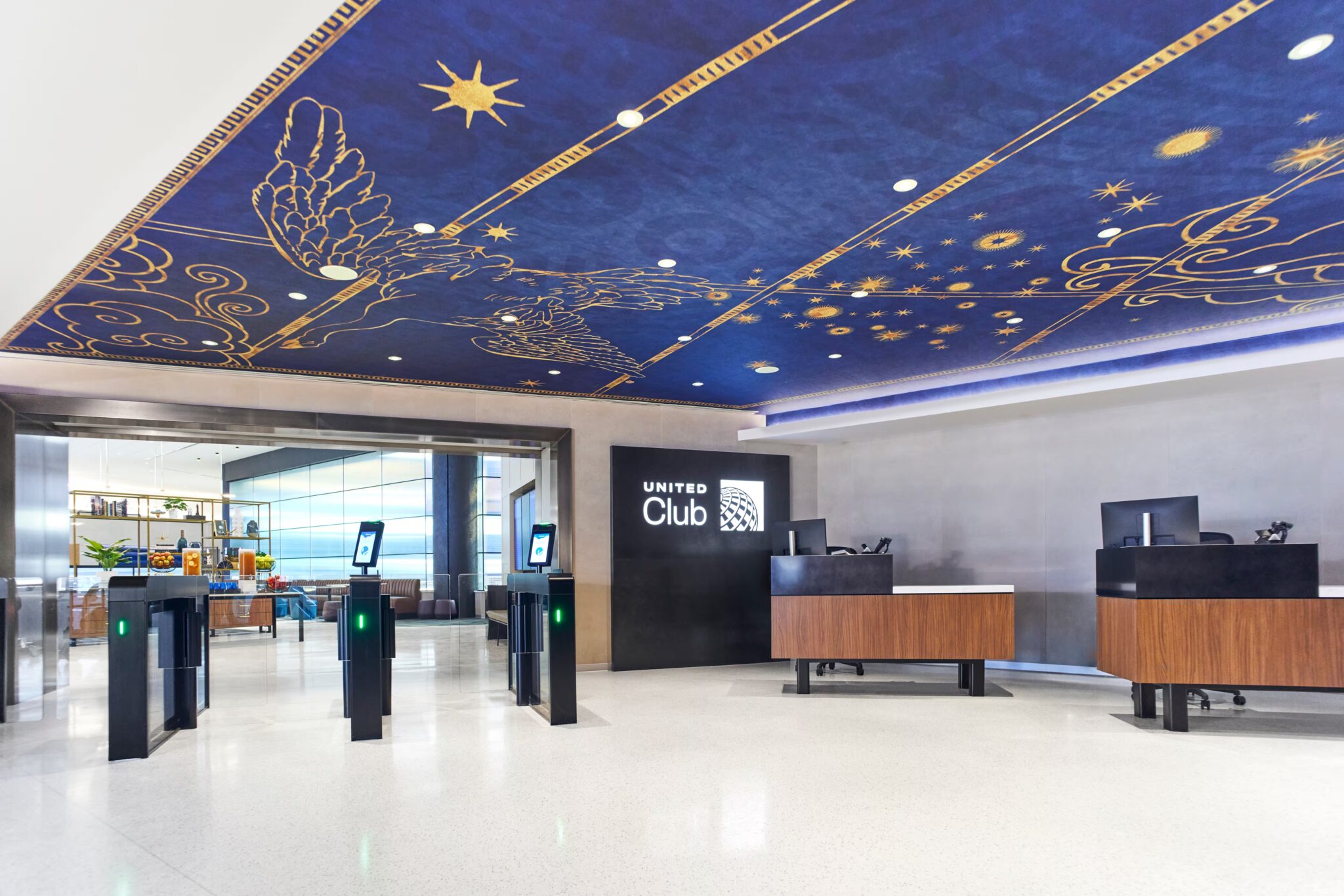
Air France-KLM Now Owns 20% of SAS: 3 Big Changes to Watch
Air France-KLM’s significant stake is more than just a strategic move—it's the latest stage of deepening consolidation in Europe's airline industry. With SAS defecting to the SkyTeam alliance and expanding cooperation with new partners, expect tighter network integration in the months ahead.
Gordon Smith | 2 weeks ago
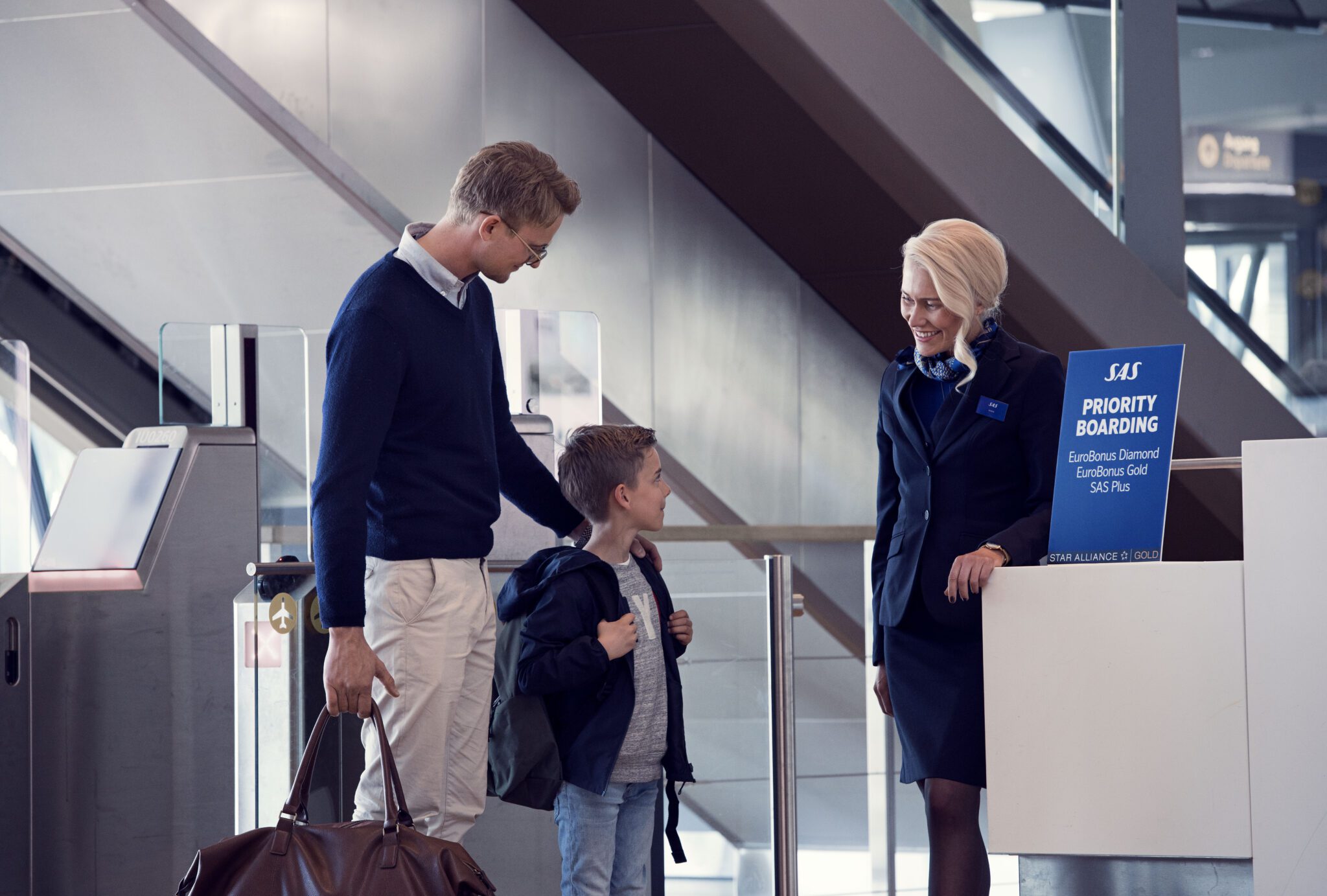
Amex GBT Blends AI With Agents to Win Business Travel Share
The travel-management giant is using AI to read and respond to trip requests via emails. The goal is to free up human agents for more critical tasks, like perhaps explaining to executives why they can't expense that "team-building" trip to Vegas.
Sean O'Neill | 2 weeks ago
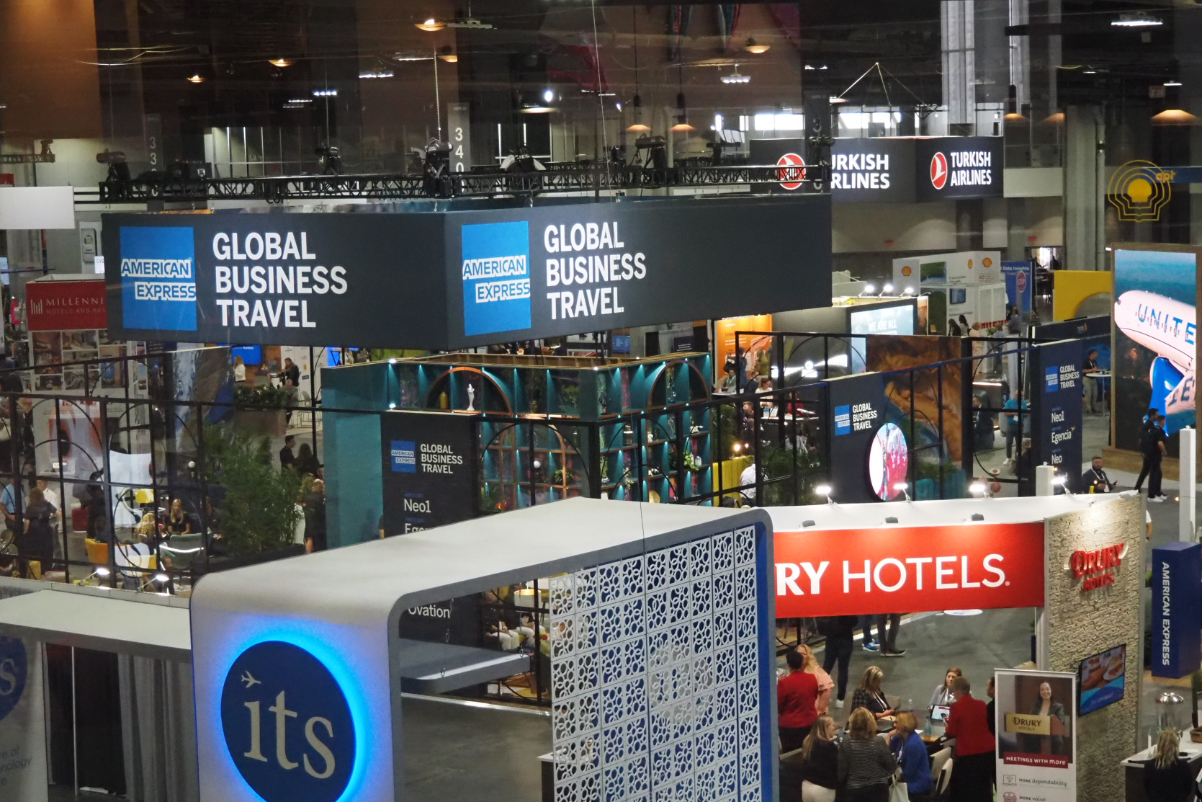
Who’s Winning the U.S. Airline Loyalty Game?
Running a profitable airline in the U.S. is increasingly about loyalty, not just logistics. All of the ‘Big Three’ lean heavily on frequent flyer programs and co-branded credit cards to help drive revenue - but who came out on top in Q2?
Pranjal Pande and Gordon Smith, Skift | 3 weeks ago
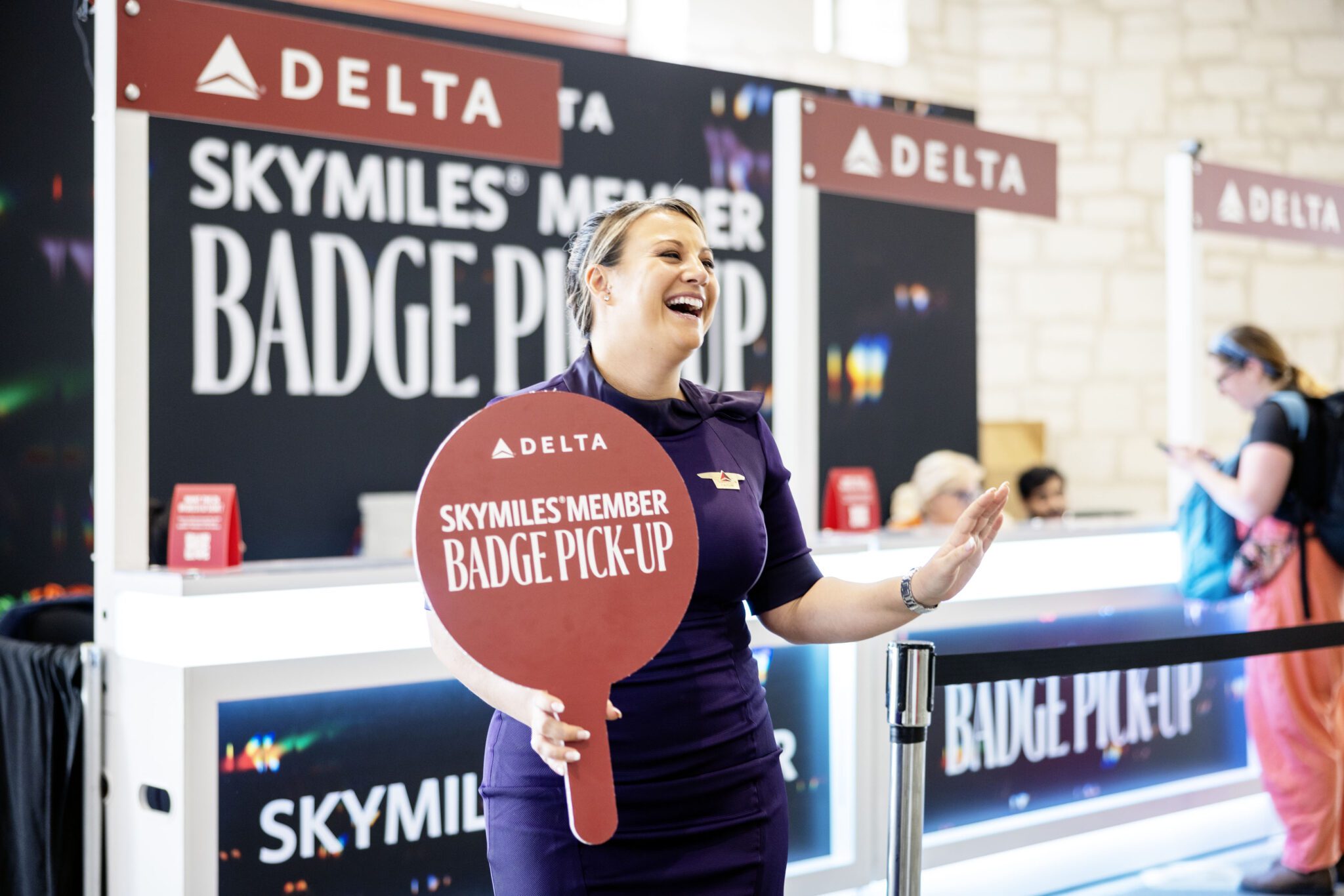
Hotel Chains Bet on New Ways of Selling to Corporate Travelers
Hotel chains are quietly planning to shift their distribution strategies, aiming to bypass traditional intermediaries and boost direct bookings from corporate travel buyers. But with billions at stake, expect fights from legacy players.
Sean O'Neill | 3 weeks ago

There’s a Boom in Smaller Meetings and Events – Hotels Are Adjusting
Hotels have been warning of soft demand in general, but when it comes to meetings and events, it's "very, very strong" (to quote Hilton's CEO). One travel management firm told us they've doubled staff to capture the business.
Christiana Sciaudone, Skift | 3 weeks ago

Switzerland Tourism Chases American Road Warriors in New Ad
With hybrid work now here to stay, Switzerland is confident there are still legs in the blended travel trend.
Dawit Habtemariam | 3 weeks ago
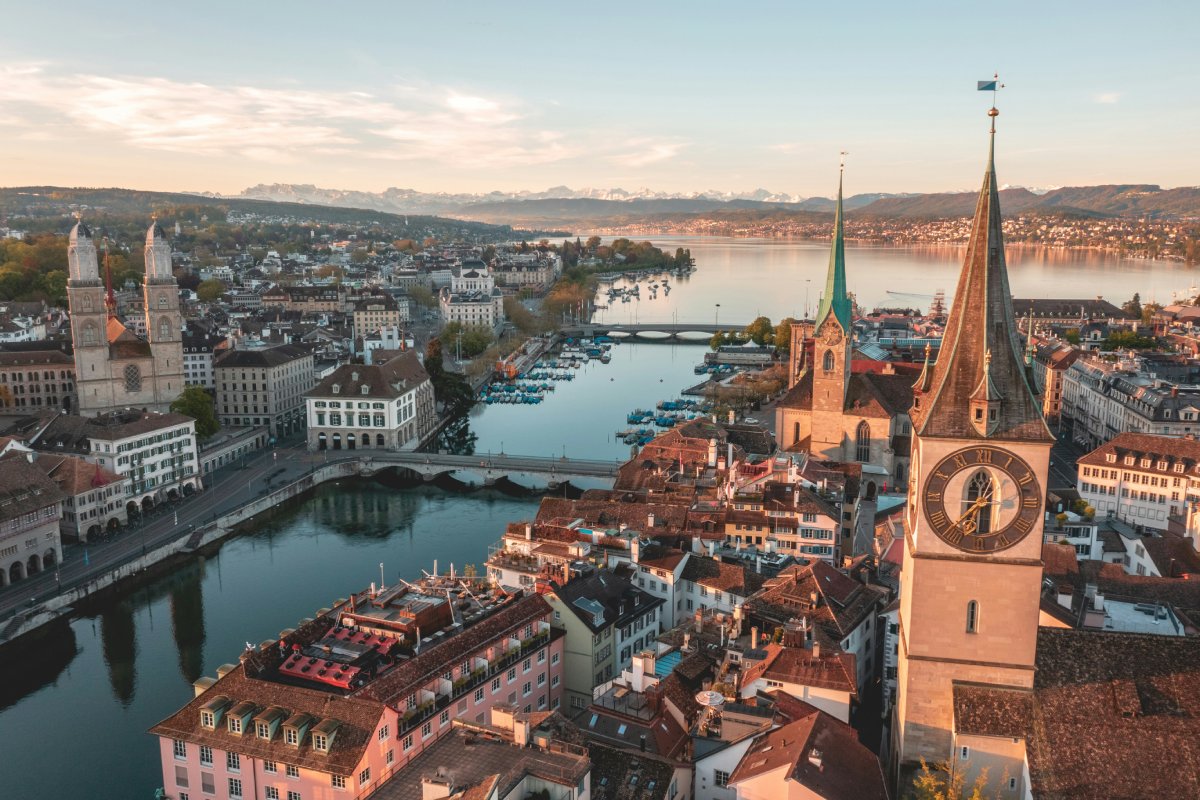
- Business Travel
- Personal Travel
- Meetings & Events
- Account Management
- Travel Counselor
- Travel Policy
- Supplier Negotiations
- Gamification
- Performance
- Online Adoption
- Implementation
- Travel Analytics
- Unused Tickets
- Contract Optimization
- Hotel Consulting
- Travel Sourcing
- Travel Alerts
- Locate & Communicate
- Medical & Evacuation
- Online Booking
- 24-Hour Support
- International Tools
- Communications
- Travel Portal
- Global Services
- Find Your Solution
- Case Studies
- Featured Insights
- Concur Login
- GetThere Login
- NuTravel Login
- Invoices On-Demand
- Direct Data
- Visa/Passport

Navigator Blog > The Top Business Travel Articles of 2021
The Top Business Travel Articles of 2021
For all its many stops and starts, 2021 brought with it rapid growth for corporate travel, continued resilience in the face of uncertainty, and robust planning for the future.
While COVID-19 and the emergence of new variants remained at the front and foremost of concerns for businesses, it shifted from the uncertain and reactive responses of the year prior to a strategic and progressive path forward for resuming travel. From resetting expectations with road warriors to tips for returning to the office safely , travel managers prioritized preparing their teams for the new norms ahead while making sure their travel programs were nimble and forward thinking.
As you reflect on the year and ready your business for 2022, review these key insights from our most popular articles of 2021:

International Borders Reopening to Travelers
When borders closed due to COVID-19 in March 2020, few could have predicted for just how long these closures would last. Companies from across the travel industry formed groups to advocate for the reopening of international borders, which finally came in June 2021 as countries across Europe reopened to vaccinated travelers . However, one of the most awaited border reopenings took more patience, with Canada welcoming back U.S. travelers in August and the U.S. following suit in November . Our articles monitoring which countries had reopened—and exploring the corresponding requirements for travelers—consistently ranked among our most widely viewed and shared, demonstrating both the demand for international travel and the importance of providing travelers with timely information.

Traveler Report: Flying Abroad with Delta and Air France
Although travelers were ready for international borders to reopen, they were still uncertain of what to expect. Would new testing and vaccine requirements be challenging to navigate? Would social distancing rules complicate the airport process? Direct Travel’s East Region President Sam DeFranco answered many of these questions for readers, providing an inside look at the new world of international travel on his trip to Paris with Delta and Air France . As part of his journey, Sam documented his experience in photos and shared insights about testing, face coverings, crowd sizes, and the response from locals. His behind-the-scenes account showed that, despite the changes, much of the world was ready to welcome travelers back for business.

What Vaccine Certificates and Health Passports Mean for Travel
One of the most important keys to travel resuming came in the form of increasingly available, highly effective vaccines. Due to the rapid speed at which they were developed and deployed, initial confusion and uncertainty was expected. For travelers, new requirements restricting travel (largely international) to vaccinated individuals meant navigating the language and expectations of health passports and vaccine certificates . Early on in the conversation, we outlined exactly what vaccinated travelers should expect and the ways in which immunization records might be displayed before traveling. The topic demonstrated the need for travelers to stay informed and have access to reliable and trustworthy sources of information.

5 Trends to Watch as Corporate Travel Takes Off
Just as travelers had to adjust to the changes reshaping corporate travel, travel managers found themselves scrambling to adapt their programs and business goals to meet the moment. Our article tackling the latest trends in the booming marketplace explored the topics shaping (and still shaping today) the business travel climate . Issues like sustainability and greener travel programs have joined more traditional topics like trip approval and improved mobile offerings to create a new list of priorities for the future. Review these trends as you go into 2022 and evaluate the areas you may need to revisit and revamp.

Signs of the Travel Rebound Now In Progress
A recurrent theme of 2021 was the search for reassurance and resilience in the face of uncertainty. Although, significant progress has been made since 2020, the surges and subsequent plateaus in both COVID-19 cases and business recovery have made it easy to lose sight of the considerable growth accomplished. Direct Travel has provided progress reports on travel recovery throughout this past year, including our article breaking down the positive indicators of the current travel rebound . Signs like increased vaccination rates, higher travel volumes, and the easing of travel restriction all point to a new road ahead.
While the business world traditionally evaluates performance in terms of sales cycles and fiscal years, the results of 2021 show that the COVID-19 pandemic and travel’s corresponding recovery must be evaluated on a strategic, long-term scale. Undoubtedly, 2022 promises more growth ahead, with a bright New Year offering opportunities to celebrate the progress made and continue building for the future. Reminder if you haven’t already, to subscribe to Direct Travel’s Corporate Travel Newsletter to stay connected to the latest business travel news.
Subscribe to the Navigator Blog:
Copyright 2024 by Direct Travel | Privacy Statement | Terms Of Use | GDPR Privacy Notice
Tech Firms Halve Business Travel in 2023 but Alphabet, Apple Lag, Study Shows

FILE PHOTO: An airplane lands during sunset, March 29, 2021. REUTERS/Kai Pfaffenbach/File Photo
(Reuters) - Global tech giants halved their business flight emissions in 2023 compared to 2019, but companies like Apple and Google's parent Alphabet are falling behind, risking a return to pre-pandemic levels, a Brussels-based NGO said in a report.
Business travel last year approached pre-pandemic levels but trailed behind leisure trips, as geopolitical conflicts and a slower rebound in key markets hindered full recovery.
Emissions from corporate flights by 26 major tech companies analysed by Travel Smart, a campaign led by Transport & Environment (T&E) dropped by an average of 49% in 2023, it found.
While this shows that many tech firms are on the right path, only seven have set specific reduction targets that are essential to keeping business flight numbers in check, T&E said.
Alphabet, which has not set a goal to cut emissions, and Apple, which set a broader target, are slowly creeping back toward 2019 levels, T&E said.
The two were among the worst performers, with reductions in corporate travel emissions of just 23% and 31% in 2023, respectively.
"How can (Google chief) Sundar Pichai say that Google is progressing to a sustainable future when its travel emissions are going in the wrong direction?" said Denise Auclair, corporate travel manager at T&E.
Microsoft, IBM, and SAP, despite significant cuts, are also at risk as they are among the companies that fly the most without having set reduction goals, T&E said.
"Tech companies have claimed to be climate leaders for a long time and many have substantially reduced their business travel emissions, but if they want to be credible they must set reduction targets," Auclair added.
Asked about its performance, Apple said it has already reduced its greenhouse gas emissions by more than 55% since 2015 as part of its goal to become carbon-neutral by 2030.
"We're achieving this by making reductions across our entire carbon footprint — including business travel — and implementing significant cuts to the largest sources of our emissions," a spokesperson for Apple told Reuters.
Other companies were not immediately available for comment.
(Reporting by Dagmarah Mackos; Editing by Aurora Ellis)
Copyright 2024 Thomson Reuters .
Tags: environment , United States , pollution , Europe , Germany
The Best Financial Tools for You
Credit Cards

Personal Loans

Comparative assessments and other editorial opinions are those of U.S. News and have not been previously reviewed, approved or endorsed by any other entities, such as banks, credit card issuers or travel companies. The content on this page is accurate as of the posting date; however, some of our partner offers may have expired.

Subscribe to our daily newsletter to get investing advice, rankings and stock market news.
See a newsletter example .
You May Also Like
Dividend stocks to buy and hold.
Wayne Duggan Sept. 10, 2024

Fidelity vs. Charles Schwab
Marc Guberti Sept. 10, 2024

Are Brokerage Accounts Taxed?
Coryanne Hicks Sept. 10, 2024

6 Best Cryptocurrencies to Buy
John Divine Sept. 10, 2024

Natural Gas Stocks to Buy

7 Best Vanguard Funds for Retirement
Coryanne Hicks Sept. 9, 2024

9 ETFs to Buy When Interest Rates Fall
Jeff Reeves Sept. 9, 2024

7 Best Small-Cap Tech Stocks to Buy
Wayne Duggan Sept. 9, 2024

9 of the Best Bond ETFs to Buy Now
Tony Dong Sept. 9, 2024

10 Best Artificial Intelligence Stocks

What Are Magnificent 7 Stocks?
Wayne Duggan Sept. 6, 2024

6 Best Natural Gas Funds
Matt Whittaker Sept. 6, 2024

7 Best High-Dividend ETFs to Buy
Glenn Fydenkevez Sept. 6, 2024

7 Best Vanguard Funds to Buy and Hold
Tony Dong Sept. 6, 2024

6 of the Best AI ETFs to Buy Now
Tony Dong Sept. 5, 2024

10 Best-Performing ETFs of 2024
Jeff Reeves Sept. 5, 2024

9 Best Cheap Stocks to Buy Under $5
Ian Bezek Sept. 5, 2024

10 of the Best REITs to Buy for 2024
Wayne Duggan Sept. 5, 2024

7 Best REIT ETFs to Buy for 2024
Glenn Fydenkevez Sept. 4, 2024

Recent and Upcoming IPOs
Brian O'Connell Sept. 4, 2024

TikTokers are taking 'aesthetic' photos of their TSA trays in the latest travel trend. But not everyone's on board.
- The "TSA tray aesthetic" trend is taking over TikTok with over 16 million posts.
- Some creators are having fun with their flat lays, while others are just documenting their travel.
- Critics argue the trend causes delays at airport security, but creators say they are being mindful.

In the ever-evolving world of travel trends, it's time to say goodbye to raw-dogging — flying without devices or any other distractions — and hello to the "TSA tray aesthetic."
Gen Z's fall travel trend requires participants to conceptualize, style, and photograph their personal belongings at the TSA's airport security checkpoint before hopping on their flight.
The "TSA tray aesthetic" has been all over TikTok for the past few weeks, with over 16 million related posts drawing thousands of views.
Before her trip to Mexico, 24-year-old creator Ckalysta Hutchings made one such video, in which she artfully arranged her personal belongings in a gray bin.
In her video, she shows an iPad in a black textured case, matching headphones, a pair of sunglasses, a Rhode Beauty lip gloss on a gray iPhone cover, and a blush, which are methodically positioned.
@ckhutchings TSA airport bin pics ft all my @rhode skin favs 🫶🏼🧖🏻♀️✈️ #pinterestaesthetic #microinfluencer #contentcreator #microinfluencertips #traveltiktok ♬ Apple - Charli xcx
"We just got a bin and snapped a few photos in under 10 minutes," Hutchings told Business Insider, emphasizing that she and her sister had only done so "after we had gone through security."
Like many other people her age, Hutchings uses Pinterest to plan her trips. From outfits and accessories to aesthetically arranging her airport security bins, everything is conceptualized in advance. She thinks of it as a way of organizing her life and planning for what's next.
Not everyone can creatively thrive under airport security pressure, though. Some, like Vicki Rutwind, a former lawyer turned travel content creator, prefer photographing in the comfort of their home. That meant purchasing a plastic security bin before travel to keep up with the trend.
"I created my video all in one afternoon in my kitchen. I am not a put-together person at the airport, and I fly a lot," Rutwind told BI.
@vickirutwind My TSA trays based on which destination I’m traveling to. Which is your favorite? 💙 Santorini, Greece 🍋 Positano, Italy 🥐 Paris, France 🌸 Hawaii, USA (Products from P448 + @NARS Cosmetics + @elfcosmetics + @OtterBox + @dolceitalianaoriginal were gifted by those brands) #travelaesthetic #pinterestaesthetic #travelstyle #travelinstyle #packingideas #pinterestaesthetic ♬ original sound - 🐈⬛

A travel ritual before it turned into a viral trend
The practice isn't totally new, though. When Emily Abbate, a former magazine editor and current podcast host of Hurdle , began traveling a lot for work in 2015, she wanted a unique and quick way to capture her adventures.
That's when she turned to airport bins and began putting together flat lays.
"I started throwing a few things into my bag before I would travel that would be indicative of where I was heading," she told BI, adding that she only took photos after going through security and taking her tray off to the side.
Her items included a mix of practical products, such as a Lonely Planet book on Paris when she attended the Olympics earlier this year, or a pair of sneakers if she collaborated with a particular brand.
Abbate saw this as a fun way to commemorate her travels. While she has not participated in the recent viral trend, she understands its value.
"I found it really fun to look back at [them] end of the year and have a personal scrapbook of all the cool places that I had been to," she said.
View this post on Instagram A post shared by Emily Abbate (@emilyabbate)
Rutwind also considers it a unique way to relive her travels. Upon seeing the trend, she ordered a $17 bin on Amazon — which doubles as a storage bin — and then styled it using different colorways representing destinations and products, such as a pair of red sneakers and matching NARS lipstick for Paris or a pair of blue Adidas and matching knitwear for Santorini.
Some lifestyle brands and creators are monetizing this trend
From fashion label Reiss to publishing house Faber, brands have participated in the trend by showcasing a collection of products — books, mules, designer knitwear, or claw clips — that would be part of their "airport aesthetic."
Related stories
"This trend specifically aligned perfectly for us, curating an aesthetic selection whilst focusing on our travel-friendly products," storage solutions brand Stackers told CNN .
@mystackers What the Stackers marketing team’s airport security trays look like this Summer… whos tray is your vibe? 👀 airporttray whatsinmybag packing summerpacking summeraesthetic ♬ Angel Of My Dreams - JADE
Lifestyle content creators , like Symphani Soto, have also used the microtrend to boost their personal brands, arranging everyday essentials she uses and linking them to their LikeToKnow.It or LTK , an e-commerce platform that allows creators to share and sell products from partner brands.
"It's just a fun way to curate what I actually use every day and share with people; if they want to purchase something like a lipstick or a bag, for instance, they can automatically go over there and purchase it," Soto told BI.
Not everyone is on board with the trend
When Caleb Harmon-Marshall, a former TSA agent , started receiving calls from his old co-workers stating that several people at the airport were holding up the lines to take photos of their bins, he knew he had to say something.
Since leaving his job, Harmon-Marshall has run a travel newsletter, Gate Access , which focuses on passengers' flight and security rights. So he decided to make a video and "not tell people not to do it, but just be mindful of the people behind you," he told BI.
Harmon-Marshall isn't the only one to flag this. Several news outlets have reported that some influencers have made what's already an annoying part of traveling even worse by holding up the lines.
Creators who spoke to Business Insider emphasized they would never hold up the security line or encourage their followers to do so.
A TSA representative told BI they're aware of the trend and that "as long as the staged glamor photos are not causing delays or issues with other passengers in the checkpoint, there are no issues."
The spokesperson added that people who wish to snap their bins should do so after they've crossed security and that "setting up a bin 'just so' for that ideal social media photo might take a minute or two, so best to go through the security checkpoint and take the photo afterward. At that point, take all of the time you want to set up the bin."
As with most online fads , this one has received strong and mixed reactions from people online.
Hutchings said she had a series of hate comments on her video, but what really matters is "how you, as an individual, feel about your feed."
The cute photos she uploads make her happy and hopefully inspire others, so, she said, "at the end of the day, if it's not for you, keep scrolling."
Watch: Why the retail industry has its eye on Gen Z
- Main content
- National Security
- Matthew Continetti
- Men of the Year
- Men Of The Year
Illicit Chinese Vapes Are Flooding the US Market—and Becoming a Leading Choice for Children, Survey Finds
The Struggle To Contain Communism … in One Book
Watch: joe biden's senior moment of the week (vol. 25), multimillionaire obamas haven't donated to joe biden's campaign, dialing it in, obamas make offer for multimillion-dollar martha's vineyard estate, tim walz's china travel business was dissolved for failing to pay $26 operating tax, records show, as governor of minnesota, walz oversaw some of the most aggressive corporate tax hikes in the country.
Corporate tax hike advocate Tim Walz had his China travel company shut down by the Nebraska government for failing to pay a minor business operating tax in 1998, according to corporate records.
Educational Travel Adventures, Inc., which Walz founded with his wife in 1995 to run group trips to China, was dissolved by Nebraska’s secretary of state for "non-payment of occupational taxes"—just $26 annually—in April 1998. The company was left defunct for years, even as Walz continued to organize group tours to China.
In 2008, after Walz was elected to Congress, he repaid 10 years of back taxes and interest, amounting to $235, to get the company reinstated, records show.
The tax slip-up is at odds with Walz's policies as governor of Minnesota, where he oversaw some of the most aggressive hikes on businesses in the country. House Republicans are investigating his former company, Educational Travel Adventures, as a potential target of Chinese government influence operations.
Walz continued to lead student exchange trips to China for four years after the company was shut down, before founding another corporation with the same name in Minnesota in 2002. News reports indicate that he stopped running the trips one year later.
Nebraska corporate attorney J.L. Spray said Nebraska businesses are required to pay the occupational tax to remain in good standing. He said business owners sometimes fail to pay the fees due to "negligence, and the fact that they’d just as soon have the company dissolved."
The registered agent for Walz's company, Nebraska attorney Terry Curtiss, did not respond to a request for comment.
Walz’s company, Educational Travel Adventures, Inc., has drawn scrutiny from House Republicans. Oversight Committee chairman James Comer said he was concerned about reports that the student exchange trips were subsidized by the Chinese government and that Walz may have been "targeted by or recruited for CCP influence operations."
Allen Shepherd, a former history professor at Chadron State College who traveled to China with Walz in 1998, told the Washington Free Beacon that it was "quite an eye-opening tour for all of us to be over there and see how much of the rest of the world lives."
Shepherd said Walz organized the trip because he "had the contacts over there" in academia and government.
"It was my impression that our guides were somehow connected with the government," said Shepherd.
"To a certain extent I think you have to have touch with the government over there, because the government didn’t just let you walk around the country."
Shepherd said the tour was largely educational, and he and Walz met with Chinese academics who were seeking advice on how to build their country’s university system.
After Educational Travel Adventures was shut down, Walz continued to organize student trips to China, including at least two tours in 1998 and 2001. In 2002, he incorporated another company under the same name in Minnesota but stopped the trips a year later.
When Walz ran for Congress in 2006, he highlighted his record as a local businessman who "established a small business called Educational Travel Adventures, Inc. through which he conducts annual educational trips to China for high school students," according to an archived version of his campaign website.
One year after he was elected to Congress, Walz cleaned up the tax error by paying 10 years of back-taxes and interest to get Educational Travel Adventures reinstated in Nebraska. He then immediately filed an application to dissolve the company, according to corporate records.
Walz has a long record of pushing for aggressive tax hikes on businesses. In a speech to labor unions this month, Walz said the government needs to force "corporations [to] pay their fair share."
As governor, he "doubled down on [Minnesota’s] status as a high-tax state even as most states have moved in a different direction," according to the Tax Foundation, becoming the only governor to institute a surtax on capital gains income, and raising taxes on corporate foreign income, wages, and transportation.
Walz’s tax policy led the left-leaning Institute on Taxation and Economic Policy to name Minnesota’s tax system as the most "progressive" in the United States.
Published under: China , Minnesota , Nebraska , Tax Hikes , Tim Walz
- International
- Today’s Paper
- Express Shorts
- Apple Event
- Mini Crossword
- Health & Wellness
Centre revises National Highway rules: Free travel up to 20 km for satellite system-equipped vehicles
Through the notification, the ministry amended the national highways fee (determination of rates and collection) rules, 2008 to include provisions related to gnss-based electronic toll collection in india..

The Ministry of Road Transport and Highways (MoRTH) Tuesday issued a notification that will enable free journey of up to 20 kilometres a day in each direction on national highways and expressways for vehicles equipped with the Global Navigation Satellite System (GNSS).
Through the notification, the ministry amended the National Highways Fee (Determination of Rates and Collection) Rules, 2008 to include provisions related to GNSS-based electronic toll collection in India. The objective of the move is to reduce congestion at highway toll plazas and charge the toll on the basis of actual distance travelled.

“A driver, owner or person in-charge of a mechanical vehicle other than National Permit Vehicle who makes use of the same section of national highway, permanent bridge, bypass of tunnel, as the case may be, shall be levied a zero-user fee up to twenty kilometres of journey in each direction in a day under Global Navigation Satellite System based user fee collection system and if the distances travelled is more than twenty kilometres, the fee will be charge for actual distance travelled,” reads the notification.
GNSS will provide distance-based tolling where users will pay only for the stretch they have travelled on a National Highway. Also, vehicles equipped with the GNSS will be allowed to pass through toll plazas without stopping for toll payment or FASTag scanning. They will use exclusive earmarked lanes that will not have boom barriers at toll plazas.
The GNSS device—called the on-board unit—will be non-transferrable and firmly fitted in the vehicle for user fee collection. However, if vehicles that are not equipped with GNSS enter the GNSS-exclusive lanes, they will have to pay double the toll as penalty. GNSS will have advance reading, identification, and enforcement equipment for vehicles so that valid vehicles get a free-flow pass.

On July 2, Indian Highways Management Company Limited (IHMCL), a company promoted by National Highway Authority of India (NHAI), issued a global tender for the construction of free-flow GNSS Lanes at toll plazas to implement GNSS-based electronic toll collection. The tender has not been finalised yet.
- National Highways

Sena UBT chief Uddhav Thackeray shared a video on social media where MLA Mahendra Thorve's bodyguard was seen thrashing a person in Neral. The Raigad police have arrested the bodyguard and registered an FIR. Thackeray expressed concern over the deteriorating law and order situation in Maharashtra and urged for immediate action.
- Chess Olympiad 2024 Women’s Round 1 Live Updates: Vaishali ahead on clock in round 1; Divya locked in intense battle 3 hours ago
- Chess Olympiad 2024 Round 1 Live Updates: India start with a bang as all four Indians victorious 50 mins ago
- Malaika Arora’s stepfather Anil Mehta dies highlights: Malaika’s mother Joyce Polycarp records statement with the police 5 hours ago
- Kolkata Doctor Rape-Murder Case Live Updates: 30-member delegation, live telecast among key demands put forward by junior doctors for CM Mamata meet 1 hour ago

Top Stories

Buzzing Now

Sep 11: Latest News
- 01 Shah Rukh Khan lauds Abhishek Banerjee for Stree 2, asks Karan Johar to focus on filmmaking rather than hosting: ‘I have been wanting to call you’
- 02 BMC to launch structural repair works on flyovers along eastern, western expressways
- 03 French man on trial for recruiting strangers to rape his drugged wife hospitalised
- 04 NIA takes custody of gold smuggling ring accused brought back from UAE
- 05 IAF veteran loses Rs 3.64 lakh in cyber fraud on pretext of gas bill payment in Pune
- Elections 2024
- Political Pulse
- Entertainment
- Movie Review
- Newsletters
- Web Stories
Air Canada could begin suspending flights soon as strike deadline nears
Air canada pilots will be in legal strike position on sept. 17.
Social Sharing
Air Canada is finalizing plans to suspend most of its operations, likely beginning Sunday, as talks with the pilot union near an impasse over "inflexible" wage demands, the country's largest airline said on Monday.
The airline and its low-cost subsidiary Air Canada Rouge are preparing to gradually suspend flights over three days, potentially starting as early as Sept. 15. The carriers operate nearly 670 flights daily.
Unless an agreement is reached, the carrier or the union are likely to issue a 72-hour strike notice or a lockout notice that triggers a three-day wind down plan. The shutdown could affect 110,000 passengers daily.
Air Canada is allowing customers with travel scheduled between Sept. 15 and 23 to make changes right now to their booking at no cost. Customers can also elect to cancel flights and receive a credit for future travel instead.
If a strike or lockout notice is issued and a traveller's flight is cancelled, Air Canada will notify those affected and they'll be eligible for a full refund — but they won't be entitled to any additional compensation under Canada's existing Airline Passenger Protection Regulations.
Barry Eidlin, an associate professor of sociology at McGill University, said that the standoff between Air Canada and the pilots union is standard, as far as negotiations go.
He added that Canadians negotiating union contracts this year have done so in the context of high inflation, which "has really eaten into Canadian workers' paycheques."
"There is this game of catch-up being played, where workers are trying to make up for lost ground and especially ... in the context of collective bargaining agreements that were negotiated prior to the inflationary climate," he said.
'Still time to reach an agreement,' says Air Canada CEO
Talks between Air Canada and the Air Line Pilots Association (ALPA), which represents more than 5,200 pilots at Canada's largest carrier, are continuing, but both parties remain far apart, the company said.

Air Canada could begin suspending flights next weekend if no agreement made with pilots union
"Air Canada believes there is still time to reach an agreement with our pilot group, provided ALPA moderates its wage demands, which far exceed average Canadian wage increases," CEO Michael Rousseau said in the statement Monday.
First officer Charlene Hudy, chair of the Air Canada master executive council for ALPA, told CBC News in a written statement that Air Canada "should stop threatening to disrupt air travel and come to the bargaining table with serious proposals."
"Air Canada continues to post record profits — and reward its executives handsomely — while expecting pilots to accept below-market compensation," Hudy wrote. "Now, because of their corporate greed, Air Canada is preparing to disrupt flights and inconvenience passengers."
At 98 per cent, the pilots overwhelmingly voted in favour of the job action last month. The union and the airline had entered into a three-week cooling-off period, which is mandated by Canadian law, on Aug. 27.
Eidlin, the sociology professor, noted that pilots are distinct from workers in other industries, as they frequently interact with colleagues from other countries on a day-to-day basis.
"They are members of the same union, and they are talking to fellow workers who work for different airlines, and they know what these disparities are. And so that different context makes a huge difference in how people reference what their pay should be, what their expectations about pay should be," he said.
"Our government firmly believes in the collective bargaining process and Canadians are counting on the parties to get a deal," a statement from Canadian Labour Minister Steven MacKinnon's office said.
Mike Springer, who lives in Bridgewater, N.S., is a lifelong Air Canada customer. But with an upcoming operation scheduled in Toronto, he and his wife decided not to risk a cancelled flight — and booked with WestJet instead.
Springer told CBC News he's "100 per cent" on the side of the pilots.
"When you're sitting beside a plane that's on the tarmac and it's a United flight, for instance, and flying to the same city as you are, and that pilot sitting in the front gets twice as much money as you do, I don't think that's fair," he said.
As for WestJet, Springer said he has no complaints after booking this flight with the carrier.
"And maybe they're going to get new customer out of this in the end."
Pilots want to match U.S. counterparts
Air Canada's pilots have been pushing to close their salary gap with their higher-earning U.S. peers, who achieved lucrative labour deals in 2023 amid pilot shortages and robust travel demand.
"We're flying the same passengers in the same airspace on some of the very same routes, and those pilots are being compensated dramatically more than us," Hudy told The Canadian Press last month.

Air Canada strike could leave passengers scrambling
ALPA's pilots have previously said the current pay rates at U.S. rival Delta Air Lines are up to 45 per cent higher than the Canadian carrier's hourly pay rates.
"We appreciate [the Air Canada pilots'] frustration, but also note that the situation is not exactly apples to apples given the barriers to entry around pilot supply in the U.S.," TD Cowen analyst Thomas Fitzgerald wrote in a note last week.
- Air Canada pilots prepare for strike amid ongoing labour dispute
- WestJet pilots deal grants 24% pay raise over four years
Between March and September last year, pilots at Delta Air Lines, United Airlines and American Airlines secured agreements that included four-year pay hikes ranging from 34 per cent to 40 per cent.
Earlier this year, pilots at West Jet ratified a new deal, averting a strike.
Air Canada also anticipates it would take seven to 10 days for normal operations to resume once the complete shutdown is in place. Flights across its system would be cancelled over three days, with a total shutdown as early as 12:01 a.m. ET on Sept. 18.
The company is in talks with other airlines to accommodate its stranded passengers in the event of flight cancellations, it said, noting that flights under the Air Canada Express brand will continue to operate as they are operated by third-party carriers.
With files from CBC News and The Canadian Press
Related Stories
- A potential Air Canada pilot strike could impact your travel. Here's what to do about it
- Air Canada pilots vote overwhelmingly to authorize a strike. It could start next month
- Canada Jetlines grounds all flights, plans to file for creditor protection
- Leading business groups ask Liberals to send Air Canada pilot dispute to binding arbitration
Add some “good” to your morning and evening.
Your weekly look at what’s happening in the worlds of economics, business and finance. Senior business correspondent Peter Armstrong untangles what it means for you, in your inbox Monday mornings.
This site is protected by reCAPTCHA and the Google Privacy Policy and Google Terms of Service apply.
A travel boom is looming. But is the industry ready?
If things go well, we might be at the threshold of a new age of travel. Although COVID-19 variants may affect conditions, it seems only a matter of time before travelers in some parts of the world hit the road and take to the skies again, thanks to rising vaccination rates and manageable caseloads. Some countries have begun gingerly relaxing travel restrictions and reopening borders.
As the worst effects of the COVID-19 pandemic ebb, most indicators point to travel coming back—with a vengeance—as people look to reconnect, explore new destinations, or revisit reliable favorites. Many just want to get away from the confines of their homes. A McKinsey survey reveals traveling to be the second-most-desired activity among respondents (in first place: dining out). In the United States, air travel has hit two million daily passengers, closer to the prepandemic level of around 2.5 million than to the low of around 90,000, in April 2020. Hotel reservations and rental-car bookings are surging.
All these trends should taste sweet for the industry, but ill-prepared companies may find themselves facing the wrath of a cohort of leisure-focused vacationers who might already be struggling to keep up with new travel protocols. If the industry doesn’t work to increase capacity now, the ecosystem may buckle under the pressure, forcing travelers to endure long wait times and inflated prices.
This article projects two broad trajectories of how travel will likely bounce back, comparing countries that have near-zero caseloads with those that have more, but manageable, caseloads and higher vaccination rates. In both scenarios, travel companies that don’t prepare themselves for the forthcoming influx of travelers risk missing out on a valuable opportunity to recoup losses incurred during the height of the pandemic. On the flip side, we believe that by focusing on four key areas—building capacity, investing in digital innovation, revisiting commercial approaches, and learning from critical moments—travel companies can seize value as they exceed the needs and demands of their customers.
The tale of two travel recovery paths
Wherever in the world you look, you’ll see people itching to travel. Most high-income earners have not lost their jobs. In the United States, the savings rate among this demographic is 10 to 20 percent higher now than before the pandemic, and such people are eager to spend their money on travel. Leisure trips are expected to lead the rebound, with corporate travel trailing behind.
A recent survey of 4,700 respondents from 11 countries around the world, conducted by the International Air Transport Association (IATA), revealed that 57 percent of them expected to be traveling within two months of the pandemic’s containment, and 72 percent will do so as soon as they can meet friends and family. In our China travel survey, we see more and more respondents yearning for leisure trips further afield; 41 percent say they want their next trip to be outside China, the highest level we’ve seen, despite borders remaining sealed.
Yet it’s worth noting that despite the near-universal desire to travel, countries will likely manage their plans to reopen differently. Two main factors come into play here: current COVID-19 caseloads and vaccination rates. People living in countries with limited access to vaccines and uncontainable levels of cases—such as a number of countries in Africa and Southeast Asia—will continue to be bound by tight travel restrictions for some time to come.
Travel will take off in and between countries with manageable caseloads
We can expect a surge in travel in (and between) countries with manageable and moderate COVID-19 caseloads and vaccine access. These regions are willing to accept rising case levels as long as death and hospitalization rates stay low. In many European countries and the United States, a significant portion of the population has been inoculated. Such people feel safe enough to travel both domestically and internationally, especially with the introduction of safety measures such as the EU-issued digital health certificates given to people vaccinated against COVID-19. Despite fluctuating rates of new caseloads in these regions, the efficacy of the vaccine so far (to reduce the spread of the disease and avoid its worst effects) gives many people enough feeling of security to travel.
Countries in Europe that have gotten used to living with manageable caseloads of COVID-19 have begun to welcome visitors without asking them to quarantine: Iceland (March 2021), Cyprus (May 2021), and Malta (June 2021). In addition, Europe is open to vaccinated US travelers. After the US Centers for Disease Control and Prevention (CDC) started approving cruise vessels with conditional sailing certifications to enter the country, a Florida federal court ruled in June 2021 that CDC-issued regulations should serve only as nonbinding guidelines, further reducing restrictions on tourists.
If past instances serve as indicators, we’ll see travel demand soaring once travel restrictions are eased and freedom of mobility returns.
Domestic trips will lead the recovery of travel in near-zero countries
However, a slightly different picture is emerging for countries with near-zero caseloads. Countries in this group include Australia, China, New Zealand, and Singapore. Their governments face a difficult trade-off. They can open up national borders without quarantines—which will almost certainly lead to increased local transmissions of COVID-19 and an increase in new cases, especially in countries with low vaccination rates, such as Australia and New Zealand. Or, they can choose to continue imposing strict restrictions and quarantine measures until the pandemic has truly passed, which would deter all but the most determined of travelers. Unlike places that have adjusted to living with COVID-19, even a moderate increase of cases in countries with caseloads near zero would likely be unacceptable to the public.
That’s not to say there are no travel opportunities in these countries. First, we’ll likely see increased interest in domestic travel, especially for large countries with sizable home markets, such as Australia and China, which have traditionally been net exporters of tourists. With few international destinations open to visit, this group of travelers will likely seek out vacation experiences within their nations’ borders. China has seen hordes of tourists flood many scenic destinations and tourist sites, especially during peak travel seasons.
Second, even though travel bubbles have had only limited success so far, it may soon be possible for territories with very low COVID-19 caseloads and no local transmissions to open up access to each other. Mainland China, for instance, has been allowing citizens to travel to and from Macau without quarantine requirements. Hong Kong and Singapore have also restarted negotiations on a potential travel bubble between the two cities. The key is establishing common standards and trust in the public-health protocols and testing regimes of the participants in the travel bubble.
Four actions travel players must consider
Despite these promising signs, the tourism industry will likely struggle to capitalize on the imminent spike in travel demand, especially in Europe and the United States. From airlines and car rentals to hotels and airport restaurants, the entire travel supply chain is already showing signs of strain. Wait times at security checkpoints are stretching into hours at some airports, while popular vacation destinations, including Arizona, Florida, and Hawaii, are facing rental-car shortages.
Needless to say, bad news travels fast, and a negative experience can quickly become fodder for a viral video and bad publicity, leading customers to look for alternatives more in their control, including nearby drives and rental properties.
While the process is daunting, clear-sighted travel leaders know that preparing their organizations for a surge of travelers is also an opportunity to redefine their value propositions and make their offerings distinctive. This will not only reinstill confidence in travel but also increase customer loyalty. Leaders and executives would be wise to focus on the following four areas.
1. Bring back capacity
The most pressing imperative for all companies across the travel supply chain is bringing back capacity or, at the very least, ensuring that they’re able to do so. Many contract and temporary workers in the restaurant industry who were laid off during the pandemic have found other employment and are reluctant to go back to their former jobs, resulting in a labor crunch. In the United Kingdom, more than one in ten workers left the hospitality sector last year. In the United States, there was still a shortfall in April of around two million leisure and hospitality jobs—far greater than before the pandemic. Global aviation capacity levels are still well below prepandemic levels as many planes remain in long-term storage and staff remain furloughed. We believe that even though reactivating airline pilots and cabin crews, preparing grounded aircraft for service, and rehiring and training service staff can be pricey, the cost of standing by and doing nothing would be higher.
2. Invest innovatively to improve the entire customer journey
While cash might continue to be in short supply, an area still worth considering for overinvestment is digital operations. Remember that the customer experience is shaped across the entire end-to-end journey, from booking to travel to the return home. Even seasoned travelers will have to adapt to new protocols, such as digital health certificates and safety measures. Travelers now need more, not less, assistance. Furthermore, certain critical journeys and moments—such as a family vacation, an important business trip, or a last-minute emergency—carry a disproportionate weight in consumers’ minds when they plan their next trip. The anticipated volume of traffic during the summer and peak holiday periods will only compound these issues and bring about greater inconvenience in the overall system.
In our work in this sector, we have found that if even one pain point in the customer journey is not satisfactorily resolved, the entire perception of a travel company can be degraded. The industry needs to make sure that processes are smooth for reopening and that adequate assistance is available for travelers to help them adapt to new ways of traveling. It is likely that international trips will need additional documentation for some time. These requirements will vary by country and potentially by transit hub. They may include proof of COVID-19 vaccination (when, as well as which vaccine) and testing requirements (type of test and recency).
As the long wait times at airport checkpoints attest, manually navigating these complexities at the check-in desk is highly inefficient and prone to human error. Some airports are testing camera-powered and AI-based digital technologies to monitor crowd densities and reduce time spent standing in line—which makes the airport experience more bearable for travelers and ensures safe physical distancing. Autonomous robots are also being deployed to maintain hygiene standards; some are equipped with UV-light cleaners to disinfect areas, and others are outfitted with body-temperature sensors to help minimize the risk of virus outbreaks.
3. Reimagine commercial approaches
Travel companies may rethink their commercial approaches. The profiles of airline passengers and hotel guests will be different: more leisure guests, later booking windows, and higher demand for flexible tickets. Historical booking curves are no longer a good indicator of current behavior. Travel companies need to use every source of insight they can to anticipate demand and optimize pricing . Flexible pricing models can also ease customer discomfort with today’s heightened levels of unpredictability. For example, EasyJet now offers a Protection Promise program that gives fliers free changes up to two hours before the flight.
Hotels will need to find new purposes for meeting and conference spaces, which will be slower to fill. Airlines need to figure out how to fill intercontinental business class, likely with premium leisure promotions. For all travel companies, the boom may be higher in traveler numbers than in profits, as the most lucrative corporate business has been slow to return.
4. Learn from critical moments—and the wider ecosystem
Aside from streamlining processes and personalizing the customer experience, investing in digital analytics can allow companies to identify opportunities to differentiate their services. Companies would also be able to discern emerging trends and hiccups before they turn into nightmares. Industry players, such as online travel agents, may also be a trove of useful insights pertaining to how the external ecosystem is evolving; their experiences may be beneficial for hotels and airlines to explore potential partnerships with them.
The various parts of the travel industry have to work together as a whole to usher in a safe return of travel. Even as individual companies improve their internal operations, they should also keep a close eye on industry-wide developments, watching for collaboration opportunities. The industry and governments will have to reach consensus on safety standards and requirements. The IATA travel pass is a plug-in that could be used on airlines’ mobile apps, for example. Currently being tested by many airlines as a way to ensure passenger health, the app would allow travelers to manage verified certifications for COVID-19 vaccines and test results. Governments, in turn, could consider accepting and embedding the app into the flight check-in workflow.
It’s been a long time coming, but we see several factors aligning that could lead to a short-term travel boom, although not all countries and customer segments will boom at the same time. With continued perseverance, travel companies can ensure that travel is not just back but better.
Vik Krishnan is a partner in McKinsey’s San Francisco office; Darren Rivas is the director of capabilities, Global TLI, in the Atlanta office; and Steve Saxon is a partner in the Shenzhen office.
This article was edited by Jason Li, a senior editor in the Shanghai office.
Explore a career with us
Related articles.

The comeback of corporate travel: How should companies be planning?

The path to recovery for US hospitality
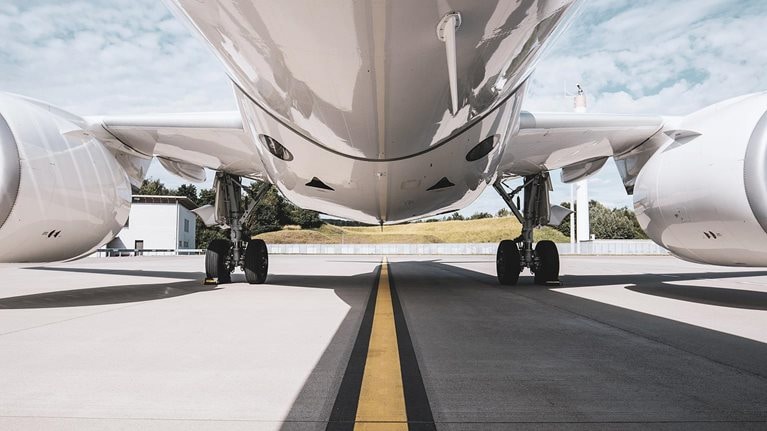
How air travel is evolving postpandemic
- Share full article
Advertisement
Supported by
Polaris Dawn Astronauts Launch on Ambitious Private Mission
The mission is taking people farther from Earth than anyone has traveled since the end of NASA’s Apollo moon missions.
SpaceX Launches Polaris Dawn Private Spaceflight Mission
Polaris dawn successfully launched tuesday morning with four nonprofessional astronauts aboard..
4, 3, 2, 1. Ignition. Two minutes into flight, everything continues to look good. Stage separation confirmed. I believe this view here is — Yep, it’s of the trunk. You can see it separating from the second stage. A gorgeous view.

By Kenneth Chang
On Tuesday morning, Jared Isaacman, a billionaire entrepreneur, launched to space for a second time. The mission, known as Polaris Dawn , is a collaboration between Mr. Isaacman and SpaceX, the rocket company led by Elon Musk.
“Send us, SpaceX,” Mr. Isaacman said with just over 30 seconds left in the countdown.
At 5:23 a.m. Eastern time, a Falcon 9 rocket lifted off from NASA’s Kennedy Space Center in Florida. Less than 15 minutes later, the crew of four astronauts inside the Crew Dragon capsule — that will be their home for the next five days — were in orbit.
“We’re going to get to work now,” Mr. Isaacman said in an exchange with the launch controllers on the ground.
The Polaris Dawn mission will mark some milestones for private spaceflight — the first spacewalk conducted by nonprofessional astronauts, and the farthest journey from Earth by anyone since NASA’s moon landings more than 50 years ago.
Why was the flight delayed?
The launch was scheduled for Aug. 28, but was called off because of a helium leak. After that, unsettled weather around Florida has proved troublesome — not so much for the launch, but for the splashdown on the sixth day.
The Polaris Dawn mission carries limited amounts of air, food, and other supplies. “Unlike an I.S.S. mission, we don’t have the option to delay long on orbit, so we must ensure the forecast is as favorable as possible before we launch,” Mr. Isaacman explained on X , referring to the International Space Station.
On Tuesday, the weather outlook improved, and the Polaris Dawn astronauts boarded their spacecraft. However, they had to wait on the ground. Because of rain showers near the first launch opportunity, at 3:38 a.m., it was skipped. Then the skies cleared up enough for the launch.
Who is on board?

In addition to Mr. Isaacman, the crew consists of Scott Poteet, a retired U.S. Air Force lieutenant colonel and pilot who is a longtime friend of Mr. Isaacman’s; and two SpaceX employees, Anna Menon, a space operations engineer, and Sarah Gillis , an engineer who oversees astronaut training.
How high above Earth will Polaris Dawn travel?
The launch put the spacecraft and crew on an elliptical orbit that comes within 118 miles of the Earth’s surface and then swings out to an altitude of 745 miles. That is the farthest from Earth that anyone has traveled since the Apollo moon missions.
Several orbits later, a thruster firing will push the farthest point of the orbit even farther out, to 870 miles. That will be higher than the 853-mile altitude that the NASA astronauts Pete Conrad and Richard Gordon reached during the Gemini XI mission in 1966, the record for astronauts on a spaceflight that was not headed to the moon.
The elliptical orbits will provide new insights into the bombardment of radiation and micrometeroids farther out in space.
Another thruster firing will drop the Crew Dragon into a lower orbit for the rest of the mission.
What will happen during the spacewalk?
It is scheduled for Thursday, the third day of the mission, although a time has not yet been announced.
All four crew members will put on their spacesuits, and then all of the air will be let out of the capsule. The hatch will then be opened and the inside of the spacecraft will become part of the vacuum of outer space.
Only two people — Mr. Isaacman and Ms. Gillis — are to leave the capsule to do the walk. Mr. Poteet and Ms. Menon will remain in the capsule to manage the umbilical cords and monitor the readings to make sure everything is proceeding properly.
The main goal of the spacewalk is to test the spacesuits, which SpaceX developed for this flight. The spacesuits are an evolution of those worn on earlier SpaceX missions, adding capabilities like protection against micrometeroids and temperature controls for the astronauts.
After Mr. Isaacman and Ms. Gillis return inside and close the hatch, the inside of the capsule will be repressurized.
What else will they be doing in orbit?
Before and after the spacewalk, the crew will conduct about 40 experiments, including obtaining magnetic resonance images of the astronauts’ brains and attempting to take X-ray images without an X-ray machine by using the natural showers of radiation that stream through outer space.
The mission is also raising money for St. Jude Children’s Research Hospital in Memphis.
How is this different from Mr. Isaacman’s first space trip?
In 2021, Mr. Isaacman led and financed a mission that he named Inspiration4 . It was the first trip to orbit without a professional astronaut aboard. Instead of bringing friends, Mr. Isaacman provided seats to a former cancer patient at St. Jude Children’s Research Hospital , who now works there as a physician assistant, and to two space enthusiasts who won contests .
The Inspiration4 mission went into low-Earth orbit for three days and then splashed down off Florida.
Mr. Isaacman described Polaris Dawn as a “joint effort” with SpaceX, seeking to develop new technologies that could be used for Mr. Musk’s dream of sending people to Mars someday. He declined to say how much he or SpaceX was investing.
Kenneth Chang, a science reporter at The Times, covers NASA and the solar system, and research closer to Earth. More about Kenneth Chang
What’s Up in Space and Astronomy
Keep track of things going on in our solar system and all around the universe..
Never miss an eclipse, a meteor shower, a rocket launch or any other 2024 event that’s out of this world with our space and astronomy calendar .
Leaving behind the two NASA astronauts it took to the International Space Station three months ago, Boeing’s troubled Starliner spacecraft is set to begin its return to Earth soon.
A speeding star is traveling through the Milky Way at around a million miles an hour. It could be moving fast enough to break free from the gravitational clutches of the galaxy .
In 1924, a radio receiver built for the battlefields of World War I tested the idea that humans were not alone in the solar system, heralding a century of searches for extraterrestrial life .
A study adds strong evidence to the hypothesis that the asteroid that killed the dinosaurs came from a family of objects that originally formed well beyond the orbit of the planet Jupiter.
Is Pluto a planet? And what is a planet, anyway? Test your knowledge here .

IMAGES
COMMENTS
The bulk of business travel (60 percent of business-travel expenditure in 2019)—which will likely drive the rebound of corporate travel—will be fueled by the FOMO segment: those traveling to cultivate important client relationships. Small and medium-size enterprises (SMEs) will likely increase corporate travel at much faster rates, as they ...
By the end of 2024, US-based companies' spend is expected to reach and perhaps surpass 2019 levels (figure 1). Findings from the fourth edition of Deloitte's surveys of travel managers, travelers, and budget owners (fielded between May 8 and June 3, 2024) indicate that corporate travel spend could grow by 8% to 12% in 2024.
A Wall Street Journal analysis last year, for example, estimated that intra-company meetings and training represented 20 percent of all business travel and predicted that 40 to 60 percent of that ...
In future articles, we will take a deeper look at the timeline and shape of the recovery curve for corporate travel. Business travel is critical—and volatile In 2018, business-travel spending exceeded $1.4 trillion—21.4 percent of the global travel and hospitality sector. 1 Global economic impact & trends 2020 , World Travel & Tourism ...
US respondents expect international trips to account for 33% of 2023 spend, up from 21% in Deloitte's 2022 survey, and similar to 2019. Long-haul corporate trips from Europe are still catching up: Respondents expect 28% of spend to go to trips beyond the continent, down from 34% in 2019 (figure 3).
Another 15% say variants triggered a significant rethink of their travel policies. Corporate travel will experience a steady, but not meteoric, rise this year. Spend is projected to reach 36% of 2019 levels in Q2 2022, and 55% by the end of the year. Business travel is at least two years from reaching prepandemic spend, as some travel use cases ...
We've done a deep dive into the latest travel trends and how industry players can adjust accordingly in The state of travel and hospitality 2024 report. Check out the highlights below, as well as McKinsey's insights on AI in travel, mass tourism, and much more. Learn more about McKinsey's Travel, Logistics, and Infrastructure Practice.
Business Travel News is the leading source of information serving the managed business travel and meetings market. BTN provides business travel management professionals in multinational, large, midsize and small corporations with news, analysis, and research to help them better evaluate, select and purchase business travel and meetings for their companies.  www.businesstravelnews.com  
Find articles on travel buyer tactics, negotiation strategies, and supplier relations to optimize travel programs. Stay updated on booking channels, global distribution systems (GDS), and direct ...
The corporate travel landscape is poised for a transformative ride in 2024 - from moderating hotel and air prices to the role of technology and our responsibility to the world. Our Amex GBT Consulting team created 4 Key Questions for Corporate Travel in 2024 highlighting the top trends - pricing, technology, the future of work, and ...
According to Morning Consult data, the percentage of frequent business travelers who say they'll never return to the road has ticked up from 39% in October 2021 to 42% in February 2022. At a New ...
In fact, according to travel management company TripActions, business travel bookings for the first three months of 2022 alone surpassed more than half of all bookings for 2021, with an 875% ...
The U.S. Travel Association, a trade group, said that in 2020, domestic business travel spending was down 68 percent from 2019 levels. And while the spending grew in 2021, the group said, it was ...
Corporate Travel. Flight Centre makes gains with small and midsize businesses Corporate business total transaction value for the fiscal year, which ended June 30, was about $8.2 billion, and the ...
By Jane L. Levere. Aug. 9, 2021. Business travel has started again, but in fits and starts. Hotels and airlines have reported a rise in bookings for travel in the United States in the last couple ...
Facing a multiyear recovery, corporate-travel providers may want to consider these actions: Shift the commercial model in response to ongoing disruptions. For example, airlines can help address inconsistent and frequently changing quarantine and testing requirements by coalescing around a global protocol. Reducing uncertainty and inconsistency ...
The Top Business Travel Articles of 2021. by Direct Travel on 12/21/2021. For all its many stops and starts, 2021 brought with it rapid growth for corporate travel, continued resilience in the face of uncertainty, and robust planning for the future. While COVID-19 and the emergence of new variants remained at the front and foremost of concerns ...
Corporate travel spend across the U.S. and Europe is expected to rise to more than half (57%) of pre-pandemic levels in the first half of 2023 and surge to 71% by the end of the year. Most companies surveyed - 71% of U.S. companies and 68% of those in Europe - expect a full recovery in travel spend by the end of 2024. ...
A study from Oxford Economics found that $12.50 of additional revenue is generated for every $1 spent on business travel. A second study, from Harvard's Growth Lab, also underlined the vital ...
Emissions from corporate flights by 26 major tech companies analysed by Travel Smart, a campaign led by Transport & Environment (T&E) dropped by an average of 49% in 2023, it found.
A travel ritual before it turned into a viral trend. The practice isn't totally new, though. When Emily Abbate, a former magazine editor and current podcast host of Hurdle, began traveling a lot ...
Most of Germany's neighbors are fellow members of the European Union, a 27-country bloc based on the principles of free trade and travel. And Germany — the EU's economic motor in the heart of Europe — shares more borders with other countries than any other member state.
Nov. 27, 2022. Business travel came back this year more strongly than most industry analysts had predicted in the depths of the pandemic, with domestic travel rebounding by this fall to about two ...
Business travelers tend to fly in premium cabins, book more flexible tickets, and buy closer to departure—which all translate to higher yields. Despite making up only about 12 percent of air traffic before the COVID-19 pandemic, corporate trips accounted for about half of the airline sector's profitability in the United States. About the ...
View in Article; Business Travel News, "BTN's 2020 Corporate Travel 100," accessed July 6, 2021.View in Article; Nikki Ekstein, "Business travel isn't dead, says AmEx. But it's changing forever," Bloomberg, March 5, 2021. View in Article
Corporate tax hike advocate Tim Walz had his China travel company shut down by the Nebraska government for failing to pay a minor business operating tax in 1998, according to corporate records.
The Ministry of Road Transport and Highways (MoRTH) Tuesday issued a notification that will enable free journey of up to 20 kilometres a day in each direction on national highways and expressways for vehicles equipped with the Global Navigation Satellite System (GNSS).. Through the notification, the ministry amended the National Highways Fee (Determination of Rates and Collection) Rules, 2008 ...
Air Canada is allowing customers with travel scheduled between Sept. 15 and 23 to make changes right now to their booking at no cost. Customers can also elect to cancel flights and receive a ...
Leisure trips are expected to lead the rebound, with corporate travel trailing behind. A recent survey of 4,700 respondents from 11 countries around the world, conducted by the International Air Transport Association (IATA), revealed that 57 percent of them expected to be traveling within two months of the pandemic's containment, and 72 ...
The mission is taking people farther from Earth than anyone has traveled since the end of NASA's Apollo moon missions. transcript 4, 3, 2, 1. Ignition. Two minutes into flight, everything ...